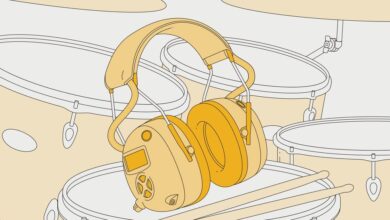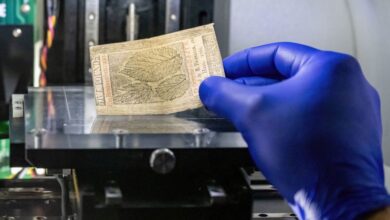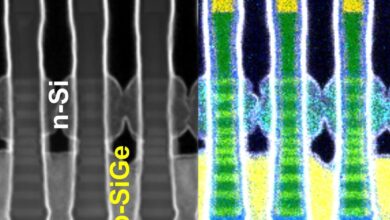Curing the AI Way

The Big Picture features technology through the lens of photographers.
Every month, IEEE Spectrum selects the most stunning technology images recently captured by photographers around the world. We choose images that reflect an important advance, or a trend, or that are just mesmerizing to look at. We feature all images on our site, and one also appears on our monthly print edition.
Enjoy the latest images, and if you have suggestions, leave a comment below.
The Wurst Use of AI
From the time the ancient Sumerians started making sausage around 4,000 years ago, the process has been the province of artisans dedicated to the craft of preserving meat so it remained safe to eat for as long as possible. Yet even traditional methods can stand to be improved on from time to time. Katharina Koch of the Landfleischerei Koch in Calden, Germany [right], has retained ancient customs such as the clay chambers in which Ahle sausages ripen while also fine-tuning the conditions under which the meats are cured (such as temperature and moisture level) via AI algorithms. The digital modifications she and scientists at the nearby University of Kassel have developed replicate the production methods that have been passed down for generations. So, instead of spending nearly a year manually monitoring the meats’ maturation process, a sausage maker using the new AI methods will be able to set it and forget it.
Uwe Zucchi/picture alliance/Getty Images
Electronic Pill Fueled by What You Eat
People with diabetes will usually prick their fingers multiple times a day in order to get readings on the amount of glucose (the type of sugar the body uses for fuel) that is in their bloodstream. But researchers at the University of California, San Diego, have developed a bloodless method for tracking blood sugar and other chemical metabolites in the gastrointestinal tract that can be used to infer the person’s relative state of health. Their solution to the finger-pricking problem: an electronic pill capable of sensing metabolite levels and transmitting data wirelessly every 5 seconds over a span of several hours. So, instead of snapshots of how the body is reacting to stimuli like food, clinicians will get a steady stream of data. The major innovation boasted by the UCSD team is that their pill draws power from a fuel cell that runs on the glucose in the gut, instead of relying on a battery laden with potentially harmful chemicals.
David Baillot/UC San Diego
Stretchy Circuits, Wired With Sound
The phrase musical arrangement has long referred to the work of art that results from a composition being adapted for different instruments or voices. But going forward, sound will get in on the act of arranging. Engineers at the Korea Advanced Institute of Science and Technology report that they used sound waves to disperse metallic droplets embedded in a polymer in order to make flexible circuits. This “musical arrangement” yields an archipelago of droplets spaced so that electrical conductivity is maintained even when the polymer is bent or twisted.
Korea Advanced Institute of Science and Technology
A Well-Balanced Machine
The relative proportions of a bee’s body and its wings say that, at least in theory, it shouldn’t be able to fly. But where would we be if bees were incapable of flitting from flower to flower, collecting nectar and spreading pollen? Roboticists at ETH Zurich, taking a page from nature, say they too have created a machine whose movement seems to defy the laws of physics. The 1.TK-meter-long gadget, called Cubli, balances on a single point, with a single internal reaction wheel whose spin keeps the unit upright. The way this is supposed to work, the Cubli would need a wheel to manage pitch and another to handle roll. But the Zurich team worked out the Cubli’s dimensions so the one wheel is capable of counterbalancing any forces that would topple the machine.
ETH Zurich
IEEE Spectrum




